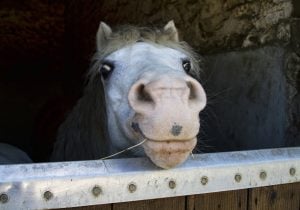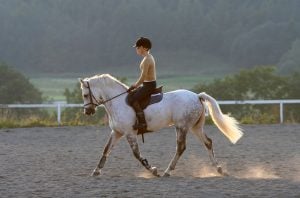The prediction that robot jockeys could take the reins on racecourses within ten years is both scary and funny, writes Carolyn Henderson. I didn’t know whether to laugh or cry when Dr Ian Pearson came up with this, after being commissioned by BetBright to look at the role of technology in racing. Dr Pearson is a futurologist – great job title – and, as a Chartered Fellow of the British Computer Society and a Fellow of the World Academy for Arts and Science and the World Innovation Foundation, obviously has his finger on the pulse.
Can you imagine what would happen if robots really did ride horses? Or even worse, were plonked on ponies? Any of us with native ponies could be futurologists on this one. A robot might be able to “sit and steer” but if its artificial intelligence couldn’t keep ten steps ahead of native cunning, it would get messy. Very messy. This is how it goes in Fellponyland or Connemaracountry: “Ooh, there’s a big leaf up there. It’s dark on one side and light underneath and if it turns over in the breeze as we get near it, I’m going to show her a canter pirouette to rival Valegro’s – only it’ll be 20 times faster. “Oh, what a shame. It only waved at me as I was alongside. Still, she said she wanted impulsion…”
On a more serious note, Dr Pearson’s prediction does reinforce how important it is to be able to think like a horse – or a pony, because I’m convinced they look at life in different lights – before you ride one. Of course it’s important to stick to classical training principles; not just because they work, but because they give a framework for horse and rider to both work and feel secure in. But I’ve been lucky enough to talk to and watch some of the best riders in the world, in all disciplines, and I’ve come away feeling even more conscious of my own shortcomings as a rider. It isn’t just that Carl Hester and his horses are poetry in motion, or that Lucinda Fredericks can take an opinionated but incredibly bold horse and perform a brilliant dressage test, an inspiring cross-country round and a technically perfect showjumping performance. It’s that they and others like them manage to work out how each individual animal ticks, even when they are training and riding so many. If you go to lecture demonstrations by riders you admire or watch them warming up before a competition – one of the best ways to get a free lesson – you’ll see that while they follow their principles, they adapt their techniques to the individual. It’s a salutary reminder to the rest of us that working a horse by rote can result in boredom, and that if you know what you want to improve, there are lots of ways to get there.
One of the best riders I know says that when she schools a horse, she tries to have a conversation with it. If she asks a question one way, and the horse doesn’t understand, she re-phrases it. A wise trainer once told me that every horse I rode would teach me at least as much as she could, and that I should take every chance to ride different animals – even if they weren’t ones I’d automatically want to own. If you’re addicted to a certain breed or type, that’s fair enough, but you might be in for some nice surprises and they might even improve your riding. Have faith in your horse. If you believe in him, and can train him correctly, you could surprise everyone else. Hairy cobs might not have the natural advantages of scopey warmbloods in dressage, but as several riders have proved, they can still work at and compete at very high levels. Similarly, ex-racehorses have proved themselves in all disciplines. Robot riders? Pah. Any horse with a brain – and Thoroughbreds can be quick thinkers – would make short work of them. And if you own or ride a horse or pony who comes up with some surprising goods, please let us know.



